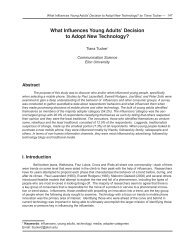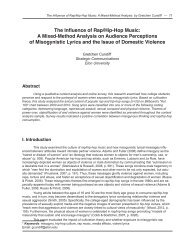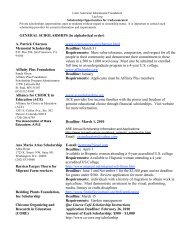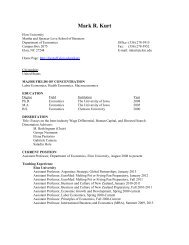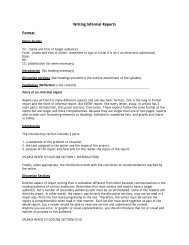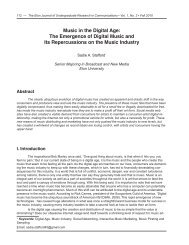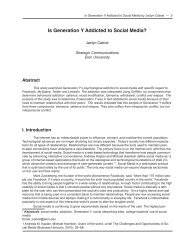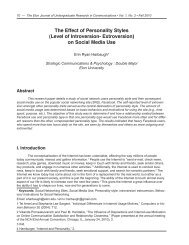In the Supreme Court of the United States In the Supreme Court of ...
In the Supreme Court of the United States In the Supreme Court of ...
In the Supreme Court of the United States In the Supreme Court of ...
You also want an ePaper? Increase the reach of your titles
YUMPU automatically turns print PDFs into web optimized ePapers that Google loves.
determine whe<strong>the</strong>r an <strong>of</strong>fense qualifies as a violent felony under <strong>the</strong> residual clause. Begay v.<br />
<strong>United</strong> <strong>States</strong>, 553 U.S. 137, 143 (2008). Under this test, an <strong>of</strong>fense is a violent felony if (1) <strong>the</strong><br />
conduct involved presents a serious potential physical risk <strong>of</strong> injury to ano<strong>the</strong>r that is (2) similar<br />
in kind and degree to <strong>the</strong> enumerated <strong>of</strong>fenses. Id. This <strong>Court</strong> determined that a DUI conviction,<br />
a strict liability <strong>of</strong>fense, did not qualify because it lacked <strong>the</strong> violent and aggressive nature <strong>of</strong> <strong>the</strong><br />
enumerated <strong>of</strong>fenses and was, <strong>the</strong>refore, not similar in <strong>the</strong> kind <strong>of</strong> risk it posed. Id. at 148.<br />
Subsequently, a number <strong>of</strong> circuit courts have concluded that, under Begay, violent<br />
felonies must be purposeful, violent, and aggressive. See, e.g., <strong>United</strong> <strong>States</strong> v. Hood, 628 F.3d<br />
669, 671 (4th Cir. 2010) (applying <strong>the</strong>se requirements under similar sentencing guidelines). <strong>In</strong><br />
Sykes v. <strong>United</strong> <strong>States</strong>, however, this <strong>Court</strong> clarified that <strong>the</strong> “purposeful, violent, and<br />
aggressive” conduct requirement only applies to strict liability <strong>of</strong>fenses and <strong>of</strong>fenses requiring<br />
negligent or reckless conduct. Sykes v. <strong>United</strong> <strong>States</strong>, 131 S. Ct. 2267, 2276 (2011).<br />
Here, <strong>the</strong> Convict was convicted under 26 U.S.C. § 5861(d), a provision <strong>of</strong> <strong>the</strong> National<br />
Firearms Act (NFA) that prohibits <strong>the</strong> unregistered possession <strong>of</strong> “firearms,” as defined in 26<br />
U.S.C. § 5845. R. at 5; 26 U.S.C. § 5861(d) (1986). The term “firearm” under <strong>the</strong> NFA does not<br />
refer to firearms generally, but to a subset <strong>of</strong> weapons, which includes sawed-<strong>of</strong>f shotguns,<br />
machine guns, silencers and certain explosives. 26 U.S.C. § 5845(a). A person unlawfully<br />
possesses a firearm if (1) <strong>the</strong> weapon meets <strong>the</strong> NFA definition <strong>of</strong> a firearm; (2) <strong>the</strong> weapon<br />
lacks registration in <strong>the</strong> National Firearms Registration and Transfer Record; and (3) <strong>the</strong> person<br />
possesses <strong>the</strong> weapon. § 5861(d).<br />
The first two elements <strong>of</strong> <strong>the</strong> <strong>of</strong>fense relate to circumstances and are irrelevant because<br />
<strong>the</strong>y do not affect <strong>the</strong> mens rea <strong>of</strong> a conduct element. § 924(e)(2)(b)(ii) (examining <strong>the</strong> potential<br />
risk <strong>of</strong> conduct). The mens rea for <strong>the</strong> conduct element <strong>of</strong> “possession” is greater than<br />
18




